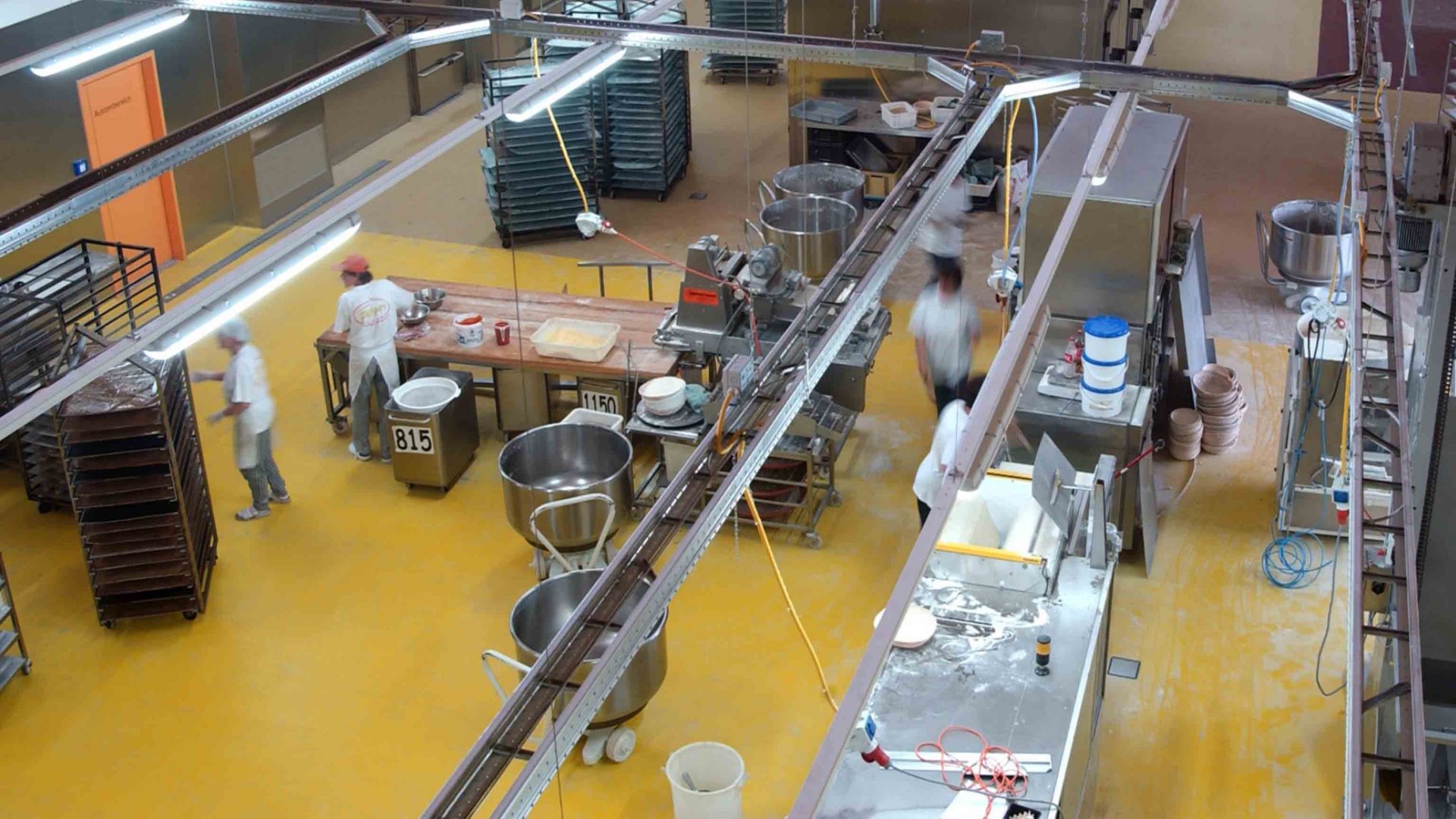Food and beverage factories or food-related processing plants include a vast array of project types.
A dairy or beverage plant. A catering or industrial kitchen. A slaughterhouse or fish packing facility. A bakery. A fruit and vegetable processing plant. A snack production facility. Freezers, bottling lines, raw material processing, packaging and storage areas.
These are a few examples of businesses and areas that exist in the food processing industry. And each of them has its own specific requirements for flooring, walls, and other surfaces whether for new construction or renovation.
1Source: World Health Organization (WHO) estimate of global burden of foodborne diseases, 2015
Systems Plus Knowhow
A functional and purpose-built floor is key to a safe, hygienic production environment. Floors that are hygienic, non-slip, easy to clean and durable provide a secure, attractive place to work. Choosing and installing the right floor is critical to every work environment.
The floor must be hygienic, functional, tough and safe to walk on.
Sika offers solutions for food and beverage production plants. Sika helps owners, designers and project managers select and install the right floors, walls, ceilings, and other finishes for all their food processing and distribution needs.
Building from the ground up or renovating an existing facility provides opportunities to secure a company’s future success. Just as choosing the right food processing equipment is crucial to that success, so is choosing the right flooring, finishes and details and installing it all properly.
Explore our Production & Processing Areas Flooring Solutions
Three Critical Factors in a Food Processing Factory
1. Hygienic and Easy to Clean
Cleaning of floors in the food industry differs from site to site and from process to process. Regardless, the goal is the same - to maximize hygiene and minimize food infection risks.
Cleaning methods must always be adjusted to the environment and operations. For flooring, for instance, higher surface roughness requires more scrubbing and mechanical work. A rough floor needs to be flushed with higher amounts of water than a smooth one.
In principle, all food and beverage factories use similar detergents and chemicals. However, their use and cleaning procedures may differ between processes. In the same factory, there may be dry processing and wet processing areas with different kinds of contamination.
Learn more about hygienic floors and walls in food and beverage factories
2. Safe and Slip-Resistant
Employee safety is one of the most important requirements for any workplace. Slips and falls are among the most common injuries at work. Most occur because the floor is wet or contaminated.
Four main factors can cause a worker to slip and fall down. These include environment, organization, footwear and individual factors. When selecting the floor surface texture for required slip-resistance, the most important issues to consider are the degree of contamination, applied cleaning regime, slopes and the shoes or boots that personnel wear.
Learn more about personal safety in food and beverage factories
3. Tough and Durable
A durable floor is one that lasts a long time and one that resists deterioration and loss of performance. Main exposure factors include thermal shocks, chemical stress and mechanical loads causing wear and impact. Durable floors begin with quality materials, good design and sound workmanship.

